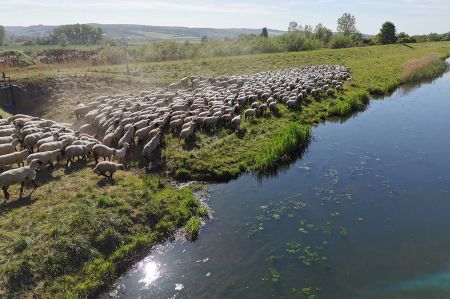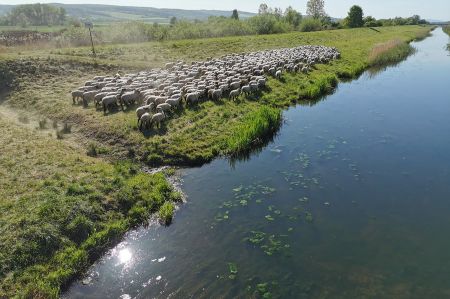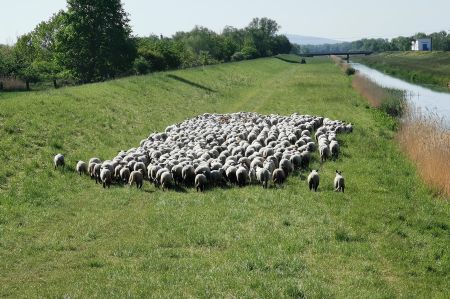Encountering the dike sheep on the Unstrut
- Written by Portal Editor
Sheep provide us with wool, milk and meat and are among the oldest breeds of domestic animals known to anyone who has ever seen a flock of sheep.
The first domesticated sheep are dated to around 8000 BC. in the "Fertile Crescent" in present-day Turkey, Iran and Iraq. Living on the North Sea coast, sheep also serve a significantly different purpose. They ensure the safety and maintenance of the dykes, not only on the North Sea, as we have seen, because the North Sea has the highest dykes, but the dykes along the rivers are not without.
Exploration of monumental sights in Burgenland

After a few hundred meters we came to a bridge over the Unstrut Flood Canal, which forms the border between Saxony-Anhalt and Thuringia. Some anglers tried their luck from the bridge and some cyclists had gathered on the bridge to take a break. A little later we were supposed to follow the peer pressure of a flock of sheep that were grazing along the Unstrut Flood Canal with shepherds and shepherd dogs and were now to be resettled under the bridge to the next area. At first hesitantly, but then at high speed, the herd mastered the crossing under the bridge, where the shepherd and his shepherd dogs preferred to look for the way over the bridge.
Flood protection for centuries - also on rivers

- Sheep keep the turf tight: Sheep have a very deep bite and thus keep the grass very short. As a result, the culms become thicker, the tillering is better, the compaction is better and thus the stability.
- Sheep ensure the stabilization of the dykes: the better stocking means that the grass roots also become more compact and stabilize the earth. The grass thus becomes a protective layer for the dyke and thus for people and nature behind it.
- Beware of mowing work: Sheep "mow" the green stalks evenly, so that the dikes can save themselves the expensive motorized lawn mower.
- With pressure and scurrying: Sheep have an optimal ratio of body weight to hoof size. With their small, strong hooves and the right body pressure, they compact the turf on the dikes – like a triple roller. The shepherds call this practical side effect of dike sheep husbandry the "golden step". A skill that few machines can replace.
- Sheep are the best dyke protectors: unlike cows and horses, sheep don't kick holes in the dyke with their small feet. Due to the firmness of the turf, voles and moles cannot dig holes in the dike. That would be a high risk for the safety of the dyke, because during high water water could penetrate into the holes and undermine the dykes. There is then a risk of a dike break.
Please read as well:
